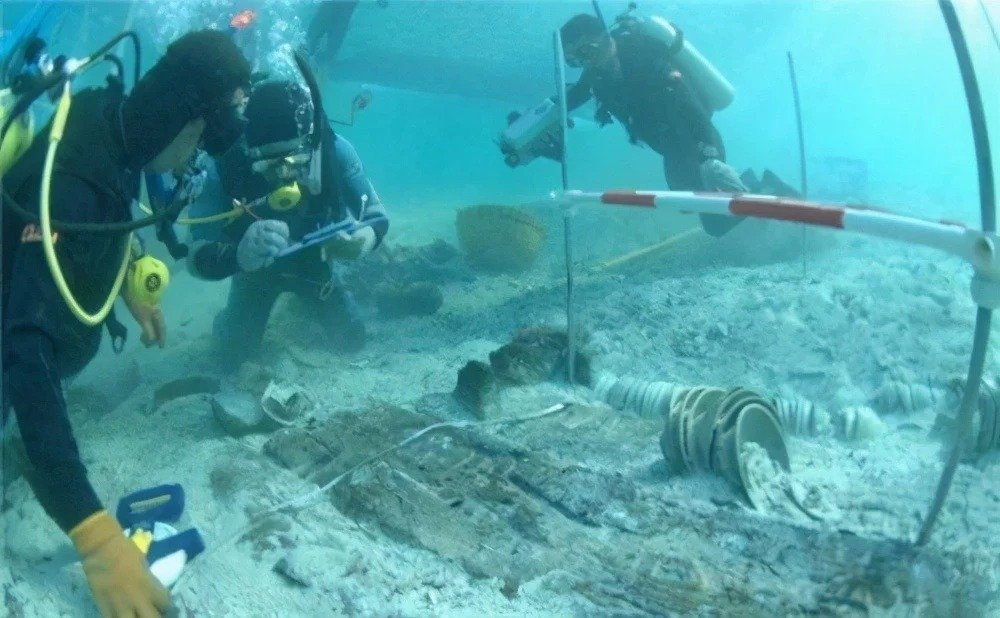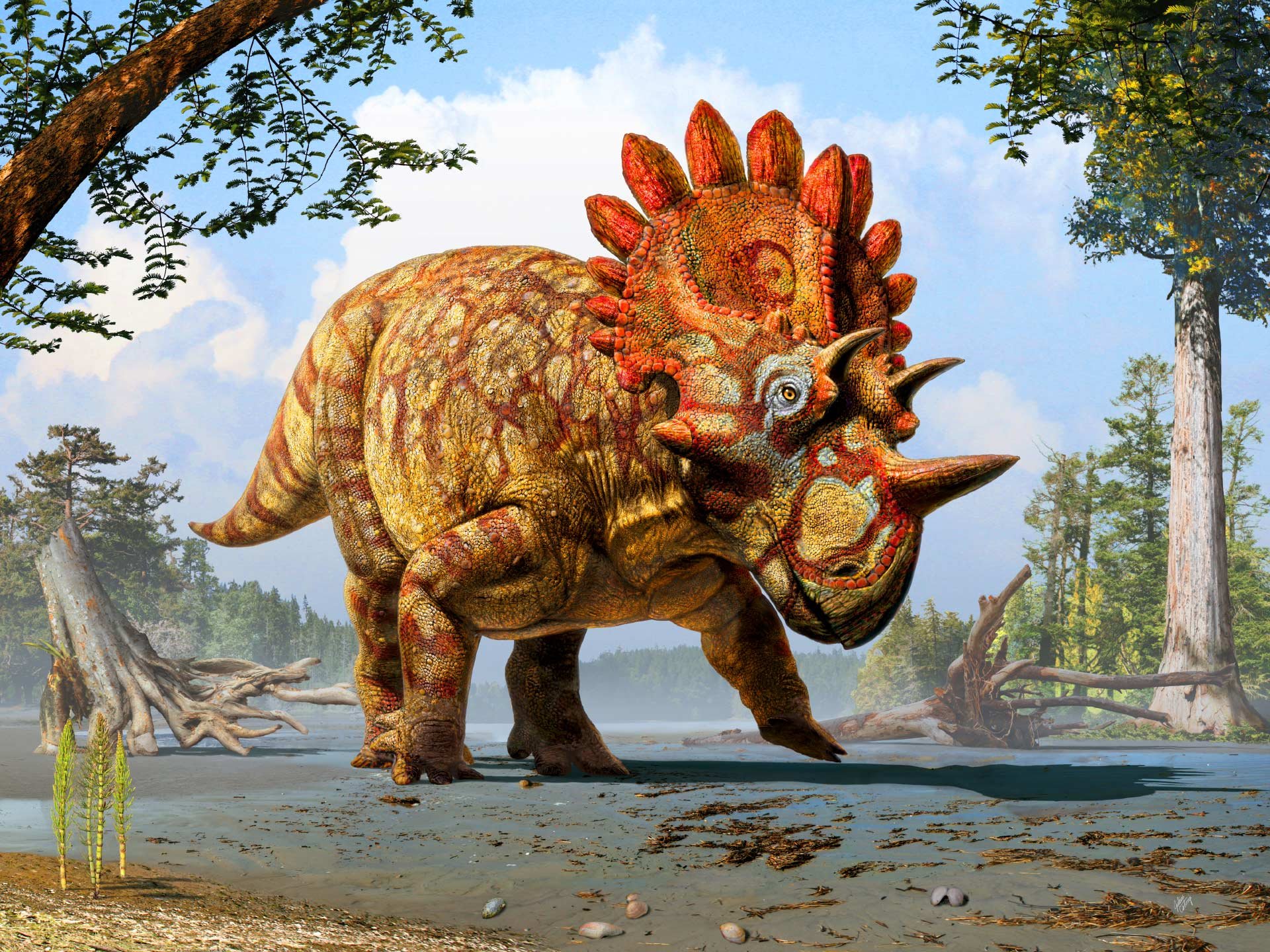This piece is called Lady with an Ermine by Leonardo da Vinci. It’s a portrait of 16 year-old Cecilia Gallerani, the favorite mistress of the Duke of Milan, Ludovico Sforza. It’s a painting created to commemorate the couple's relationship. A relationship that ended before the painting could even be completed due to Sforza’s marriage to Beatrice d’Este. Why did Leonardo da Vinci choose to include such a strange animal in this portrait? It’s probably not for the reason you might think!
What Is Judaism?
Judaism, at 4000 years old it is one of the oldest monotheistic religions and the granddaddy of Christianity and Islam. But even though its teachings helped create the world’s two most popular religions many people don’t know what the Jews actually believe.
Judaism developed in the eastern Mediterranean over the last 4000ish years. Today there are about 15 million Jews making it the world’s tenth-largest religion.
What is the Torah? What’s a Covenant? And why does no one worship mermen in the Middle-East anymore? Well Let’s Find out.
Medieval Traditions Not Taught in History Class!
As one of the supposedly darkest epochs in human history, the Middle Ages still do not have a good reputation. In this regard, we often think of dirty farmers and villagers who were superstitious and a bit underexposed. But what was everyday life in the Middle Ages really like? To put it plainly, the people of that time were actually quite wacky in many respects! From bloody divorce battles to animals in the dock to deadly ideals of beauty, here are some weird medieval traditions your history teacher never told you about!
What They Discovered in Antarctica Shocked the Whole World
Antarctica is the coldest, driest, and windiest continent on Earth, making it a harsh and unforgiving environment for both humans and wildlife. Despite these challenging conditions, scientists have made some groundbreaking discoveries in Antarctica that have shocked the world. From Staircases to Nothing to The Volcano that Erupts Solid Gold follow along as we countdown 15 Shocking Discoveries In Antarctica Nobody Can Explain.
History of the Philippines explained in 8 minutes
In the video below we will be explaining the history of the Philippines in only 8 minutes. Watch for more and enjoy!
The Hidden Teachings of Jesus
In 1945 workers in Egypt dug into an ancient Christian tomb where they found large Jar containing 13 leather scrolls manuscripts - Inside was 48 separate works. Later known as the “Nag Hamadi library” and the “Dead Sea Scrolls” But one manuscript that stood out because it gave such a different view on Jesus’s teaching’s: The Gospel of Thomas.
A great question to ask is “if all books and teaching weren’t included in the bible…Who decided what stays/goes? Constantine and Bishops in Council of Nicaea in 325AD. At least 45 books were completely taken away or tremendously edited. What the public was left with is what we now call “The New Testament” which makes up Christian theology.
Essentially it was watered down. Goal so everyday person could understand. An example is removing lots of women from it. Wonder why never hear about Mary or her story? The entire gospel of Mary edited out. Goes into her mother who was 81 years old how she was 14 when given to Joseph. Much more!
Here’s where we note: The Gospel of Thomas was completely ELIMINATED from the bible.
12 Astounding Archaeological Discoveries: Recent Marvels Unearthed
What's been good in the world of archaeology recently? The answer to that question is "quite a lot." No matter whether it's spring, summer, autumn or winter, the world's archaeologists are always hard at work. That means we always have fantastic fact-filled videos of amazing discoveries to bring to you - just like this one. Let's go!
Experts Made A Miraculous Discovery At Mount Zion That Proves A Biblical Story Really Took Place
At Mount Zion in Jerusalem, a group of archaeologists are slaving away in the Middle Eastern heat. And as the team go, they pick through thousands of years of history in a bid to find something significant. Their efforts aren’t in vain, though, as ultimately they’re rewarded with an incredible find – something that may just prove a story from the Bible actually once took place.
The myth of Pegasus and the chimera
Discover the myth of Bellerophon, the hero who battled and killed the Chimera monster atop the winged horse Pegasus.
Shielded from the gorgon’s stone gaze, Perseus crept through Medusa’s cave. When he reached her, he drew his sickle and brought it down on her neck. From Medusa's neck sprung two children. One was a giant wielding a golden sword; the other was the magnificent, winged horse, Pegasus. No bridle could contain him— until one fateful day. Iseult Gillespie details the myth of the hero Bellerophon.
Fish originally branded a '66 million years ago living fossil' amazes scientists again
The coelacanth - a wondrous fish that was thought to have gone extinct along with the dinosaurs 66 million years ago before unexpectedly being found alive and well in 1938 off South Africa's east coast - is offering up even more surprises.
Scientists said a new study of these large and nocturnal deep-sea denizens shows that they boast a lifespan about five times longer than previously believed - roughly a century - and that females carry their young for five years, the longest-known gestation period of any animal.
Focusing on one of the two living species of coelacanth (pronounced SEE-lah-canth), the scientists also determined that it develops and grows at among the slowest pace of any fish and does not reach sexual maturity until about age 55.
The researchers used annual growth rings deposited on the fish's scales to determine the age of individual coelacanths - "just as one reads tree rings," said marine biologist Kélig Mahé of the French oceanographic institution IFREMER, lead author of the study published this week in the journal Current Biology.
Coelacanths first appeared during the Devonian Period roughly 400 million years ago, about 170 million years before the dinosaurs. Based on the fossil record, they were thought to have vanished during the mass extinction that wiped out about three-quarters of Earth's species following an asteroid strike at the end of the Cretaceous Period.
After being found alive, the coelacanth was dubbed a "living fossil," a description now shunned by scientists.
"By definition, a fossil is dead, and the coelacanths have evolved a lot since the Devonian," said biologist and study co-author Marc Herbin of the National Museum of Natural History in Paris.
It is called a lobe-finned fish based on the shape of its fins, which differ structurally from other fish. Such fins are thought to have paved the way for the limbs of the first land vertebrates to evolve.
Coelacanths reside at ocean depths of as much as half a mile (800 meters). During daylight hours they stay in volcanic caves alone or in small groups. Females are somewhat larger than males, reaching about seven feet (two meters) long and weighing 240 pounds (110 kg).
The two extant species, both endangered, are the African coelacanth, found mainly near the Comoro Islands off the continent's east coast, and the Indonesian coelacanth. The study focused on the African coelacanth, using scales from 27 individuals in two museum collections.
Previous research had suggested roughly a 20-year lifespan and among the fastest body growth of any fish. It turns out that this was based on a misreading decades ago of another type of ring deposited in the scales.
"After reappraisal of the coelacanth's life history based on our new age estimation, it appears to be one of the slowest - if not the slowest - among all fish, close to deep-sea sharks and roughies," said IFREMER marine evolutionary ecologist and study co-author Bruno Ernande.
"A centenarian lifespan is quite something," Ernande added.
The Greenland shark, a big deep-ocean predator, can claim the distinction of being Earth's longest-living vertebrate, with a lifespan reaching roughly 400 years.
Ernande said the researchers were astounded when they figured out the coelacanth's record gestation period, which exceeds the 3.5 years of frilled sharks and the two years of elephants and spiny dogfish sharks.
The researchers said late sexual maturity and a lengthy gestation period, combined with low fecundity and a small population size, makes coelacanths particularly sensitive to natural or human-caused environmental disturbances such as extreme climate events or too much accidental fishing.
Inside the Second Sphinx of Egypt
Rumor has it there is a second sphinx in the Giza Plateau, and that’s what we will be exploring in the video below. Enjoy!
What Is Zoroastrianism?
What do Emperor Xerxes, Freddie Mercury, and Ireland’s richest citizen Pallonji Mistry have in common? All of them are Zoroastrians. The ancient religion of Iran. This is one of the oldest ongoing religions and altered the course of history by influencing Judaism, Christanity, Islam, and Greek philosophy.
Zoroastrianism was born in ancient Iran at least 3,500 years ago. It all began around 1500BCE give or take a few centuries with the Prophet Zarathustra or Zoroaster as the ancient Greeks called him and so English speakers do too. While we call the religion Zoroastrianism actual Zoroastrians tend to call it Mazdayasna, meaning Worshipper of Mazda.
But today it has only a fraction of the millions of followers it once had. So what is Zoroastrianism, what do Zoroastrians believe, and where do otters fit into it? Well Let’s find out.
Origin of the Great Wall
Why did the Chinese build the Great Wall? Why was the Great Wall not originally designed to keep out nomadic attacks? How long is the Great Wall exactlay? All of these questions, along with A "Crying Wolf" story of a Chinese king 3,000 years ago and the story of the assassination of the first emperor of China is what we will be discussing in the video below. Enjoy!
Revealing the truth about 1,600 tons of gold at the bottom of Lake Baikal
Explorers have long searched for lost Tsarist treasures dating from the Bolshevik Revolution, when forces loyal to the deposed royal family fled the advancing Red Army.
Legend has it that 1,600 tons of gold – which could now be worth billions of pounds – was lost when anti-Communist commander Admiral Alexander Kolchak’s train plunged into Lake Baikal, the world’s oldest and deepest freshwater lake.
On 2009, parts of a train and ammunition boxes were found.
And in recent days, the Mir-2 submersible has discovered “shiny metal objects” 1,200 feet below the surface at Cape Tolstoy. “Deep-sea vehicles found rectangular blocks with a metallic gleam, like gold,” said one source.
Explorers attempted to grab hold of the blocks with a manipulator arm but failed because of loose gravel on the bottom of the lake. Sources say that the submariners know the exact spot and are planning a new mission to determine if they have found the gold.
The Moscow News independent newspaper yesterday ran a story on the find, with the headline: “Lost gold of the Whites found in Baikal”. The story described the lost gold as “one of the great mysteries” of the Russian Revolution.
Kolchak, portrayed in the Russian blockbuster film Admiral in 2008, was a hero in the First World War. He later led the pro-Tsarist White Army against the Bolsheviks after the 1917 October Revolution. He had some early successes but was eventually arrested by Lenin’s henchmen.
They executed him by firing squad in January 1920, reneging on a promise to hand him over to the British military mission in Irkutsk. His body was hidden by revolutionaries under the ice of the Angara River, which flows out of the lake.
Had he escaped, it is likely he would have sought exile in London and brought the gold with him.
If the treasure has been found, it could spark an ugly scramble between the Russian state, descendents of the last tsar, Nicholas II, and nations – possibly including Britain – that could argue they are owed outstanding debts by the fallen Romanov throne.
Archaeologists Uncovered This 2000 Year Old Treasure And What They Found Is Incredible
The sound of lapping waves fills the air as archaeolgist Kutalmış Görkay frantically sweeps away some eye-stinging dust. He and his archaeologists team are hoping to uncover a wondrous archaeological find – but it’s a race against time. If they don’t work fast, after all, the treasure they’re trying to retrieve may be lost forever.
12 Most Incredible Ancient Finds That Change History
There can be no greater ancient discovery than one that changes our understanding of history. Such discoveries are rare, but they do happen, and every time they do, they’re worth paying close attention to. We’ve got a fantastic collection of history-changing discoveries for you in this video, so sit back and enjoy!
Man Sneaks Onto Restricted Island to Visit Uncontacted Tribe: His Story is BIZARRE
Today, we're covering the unbelievable true story of John Allen Chau and his rare contact with a completely isolated tribe: the Sentinelese.
In 2018, John Allen Chau became obsessed with North Sentinel Island. The Christian missionary was convinced he had to go to the island in order to convert the Sentinelese people, and soon, his obsession became reality - but it didn't end anything like he had possibly expected. Whatever crime that occurred on the island still remains a mystery to this very day, and John's fate still isn't truly known. This true story goes to show why you should NEVER travel to North Sentinel Island.
Join us for a true crime storytime covering the solved case of John Allen Chau.
“Regaliceratops”: New horned dinosaur discovered in Canada
Nicknamed Hellboy, the dinosaur had short horns over the eyes and a long nose horn, the opposite of the features sported by its close relative triceratops.
When fossil experts first clapped eyes on the skull, it was clearly from a strange, horned dinosaur. When they noticed how stunted the bony horns were, its nickname, Hellboy, was assured.
The near-complete skull of the 70 million-year-old beast was spotted by chance 10 years ago, protruding from a cliff that runs along the Oldman river south of Calgary in Alberta, Canada.
Painstakingly excavated, cleaned up and measured since then, the fossilised remains have now been identified as a relative of the three-horned triceratops, and the first example of a horned dinosaur to be found in that region of North America.
Like triceratops, the new species was a herbivore. But it sported a more impressive shield, or frill, at the back of its skull, decorated with large triangular and pentagonal plates. The extraordinary features led researchers to name the new species Regaliceratops peterhewsi, a reference to the impressive crown-like frill, and to Peter Hews, a Calgary-based geologist who first spotted part of the skull jutting from the rockface in 2005.
Researchers came up with the Hellboy nickname long before they had liberated the full skull from the cliff face. The main reason was that the rock the fossil was embedded in was incredibly hard, making excavation a hellish, and years-long, task. That job was made even tougher because the Oldman river is a protected fish-breeding ground, meaning the scientists had to erect a dam at the site to prevent debris from the excavation falling into the river.
“It was a coincidence, but when we noticed that the skull had these short horns over the eyes, that really solidified the nickname,” Caleb Brown at the Royal Tyrrell Museum of Paleontology in Alberta told the Guardian. In the Hellboy comics and movies, the eponmymous demon grinds his horns to stumps with an electric sander to help him fit in with mere mortals.
But the horns of the dinosaur tell a more interesting story. Triceratops belonged to a group of horned dinosaurs called chasmosaurines. These had a small horn over the nose and two larger horns over the eyes. And while regaliceratops is definitely a chasmosaurine, it has a long nose horn and puny horns over its eyes. These features, opposite to those characteristic of triceratops, are seen in a different group of horned dinosaurs, called centrosaurines, which were extinct by the time regaliceratops came along.
The bizarre mix of features is an example of convergent evolution, where one species evolves bodily characteristics that arose separately in other species through the course of prehistory. Brown and his colleague, Donald Henderson, describe the creature’s remains in Current Biology.
“This is a really interesting new dinosaur,” said Steve Brusatte, a vertebrate paleontologist at Edinburgh University. “It’s a close relative of triceratops, but it’s horns and skull frill are very different. They look a lot more like other types of horned dinosaurs that lived earlier in time, which went extinct before triceratops thrived.
“What it’s indicating is that there was massive convergence between the horns and frills of those horned dinosaurs that were thriving during the final few million years before the asteroid hit and killed off the dinosaurs. Because this new dinosaur is one of the latest surviving horned dinosaurs, living at a similar time as triceratops, it is also telling us that horned dinosaurs remained quite diverse right until the end. To me, this is a strong hint that these dinosaurs were at or near the top of their game when that asteroid fell out of the sky,” he said.
Ancient Egyptian Royal Tomb Discovered
Egyptian authorities have announced the new discovery of a royal tomb from the 18th dynasty of New Kingdom Egypt.
A joint Egyptian-British archaeological mission from the Supreme Council of Antiquities and the New Kingdom Research Foundation made the discovery whilst working on the west bank of the Nile River, in the same region where we find the Valley of the Queens.
The tomb is located in Valley C, one of the western valleys, just behind the so-called Neferure’s cliff-tomb.
Regarding the discovery, Mostafa Waziri, Head of Egypt’s Supreme Council of Antiquities said: “Current examination on the ceramics and fragmentary inscriptional evidence recovered so far indicates it is the tomb of several members of the royal family of the Thutmosid period of the 18th Dynasty.”
The tomb though is in poor condition and parts of it, including a lot of the inscriptions and paintings have been destroyed by ancient flood waters from the Nile, which filled the chambers with sand and limestone sediment.
Strangest Discoveries in Antarctica
Today we’re looking at the strangest discoveries in antarctica. Watch the video and enjoy!



















